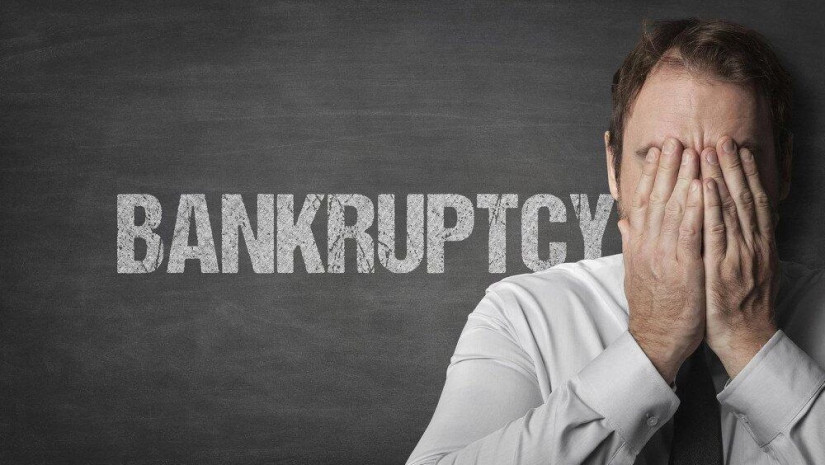The most popular solutions are as follows:
A) Diversification. It is essential to hold capital in different places: domestic and foreign stocks, bonds, funds, precious metals, cryptocurrencies, real estate, and more.
B) Conservatism. Giving preference to low-risk investments (gold, real estate, government bonds). Here, the returns are lower, but stability is higher (lower risks).
C) Moving to cash. If there’s information that a crisis is starting, it’s highly advisable to switch to cash or liquid assets. This not only preserves capital but also multiplies it (in a crisis, it’s advantageous to buy valuable assets, but money is needed for that).
The crises described above are relatively mild. It’s important to understand that sometimes SUPER-CRISES occur. Examples include the “Great Depression in the US” (1930s) or the “Wild 90s” in Russia when people lose everything and may work for food, if lucky. After the collapse of the USSR, hyperinflation in Russia reached 2500% per year.
How much am I losing to inflation? This figure changes every year. Moreover, there are arguments that official figures are underestimated by about a third. For the sake of simplicity in calculations, let’s assume:
But can I save money in foreign currency?
You won’t preserve your money in currency. This will help you lose less than in rubles, but losses will still occur. Let’s take the US dollar as an example, being the most popular and stable currency.
In the US, there’s also inflation, but typically several times less than in Russia. By the way, that’s precisely why there are cheap loans there (Federal Reserve interest rate = 2.25%), while we have expensive loans. For the sake of simplicity, let’s consider: CURRENT INFLATION IN THE US = 2%
If you exchange rubles for dollars, it will better preserve your money.
ATTENTION! Storing money is an amateur approach. Money should work, creating new money. If they don’t work (if they lie under your pillow), they will depreciate due to inflation. It only makes sense to buy CURRENCY when you TEMPORARILY “GO INTO CASH” FOR PURCHASES. This might be relevant during a crisis when the stock market is plummeting. Those who managed to “go into cash” are kings because they can buy assets at good prices (when assets are cheap).
How to stop inflation?
Don’t do this, because it would halt economic growth and human progress. The majority of people around you hold a completely false perception of inflation as an “enemy” of the economy. It’s not like that at all.
Inflation (money devaluation) is a derivative of credit (the more money is issued/printed, the more they depreciate). And credit is the engine of the economy and scientific-technical progress.
Most new projects and productions require money (investor loans) to get started. That’s why everyone talks about the need to “attract investments,” “create a favorable investment climate,” “protect investors,” and so on.
Money devalues because more is printed than there is material backing (this is called fractional reserve banking). Then these “virtual” money are distributed as loans, hoping that later the debtor will have the ability to pay back more than was borrowed.
Some can repay, stimulating economic development (new companies, projects, factories, industries, startups, etc.). Some can’t. BUT, due to the distribution of “unbacked money,” the economy grows. There are more goods, services, and products, and more money.
The more money circulates, the more they devalue. In other words, on one hand, this trust-based system stimulates economic development, society, and progress. On the other hand, we get inflation due to the increase in unbacked money (not everyone can create something and repay debts).
Overall, this is good because it fuels societal development. Thanks to this scheme, we have completely transformed our well-being in the last 500 years. Just in the last 100 years, we’ve become on average 3000% richer than our ancestors. We eat better, live more comfortably, get sick less, and die less. The overall pie called “global economy and consumption” has grown hundreds of times.
This was made possible by financing future projects with money that isn’t backed (that doesn’t exist). The side effect of this process is always inflation. Remember this and don’t listen to others’ complaints about the harmfulness of lending and inflation.
Believe me, deflation (when money gains value) is much worse because giving loans becomes disadvantageous (you can simply keep money under your pillow). The economy and progress would stop due to lack of financing.
ATTENTION! We must learn to generate income that surpasses inflation. To do this, invest in things that grow faster than inflation.
For example, if inflation is 5% this year, then putting money in a bank deposit at 5% won’t add anything. This step will merely prevent us from losing. If our goal is to gain, then investments need to be made at 7-10-15%. This is the essence of the process you’ll need to master.
How to calculate inflation?
The devaluation of the money amount slows down each year. Let’s imagine you have 100,000 rubles that you’ve put under your pillow in Russia. Let’s assume inflation is 5%.
FALSE CALCULATION (how most people do it, if they do)
- Year 1 = 95,000 (100,000 – 5%)
- Year 2 = 90,000 (95,000 – 5%)
- Year 3 = 85,000 (90,000 – 5%)
- Year 4 = 80,000 (85,000 – 5%)
- Year 5 = 75,000 (80,000 – 5%)
- Year 6 = 70,000 (75,000 – 5%)
- Year 7 = 65,000 (70,000 – 5%)
CORRECT CALCULATION (percentage is taken each year from the new remainder)
- Year 1 = 95,000 (100,000 – 5%)
- Year 2 = 90,150 (95,000 – 5%)
- Year 3 = 85,650 (90,150 – 5%)
- Year 4 = 81,370 (85,650 – 5%)
- Year 5 = 77,310 (81,370 – 5%)
- Year 6 = 73,450 (77,310 – 5%)
- Year 7 = 69,780 (73,450 – 5%)
This is why if inflation is 10% each year, it DOES NOT mean that after 10 years you will have nothing left. Each year you will lose a tenth part of what remains from the PREVIOUS year, not from the initial amount. There’s a fairly simple algorithm for accurate calculation.
Is it possible without algorithms?
Yes, you can. To estimate the rate of devaluation of your money due to inflation, you can use the Rule of 72 and the Rule of 112.
Rule of 72 (Years to Halve): Divide 72 by the average annual inflation percentage.
- With 10% inflation, it takes approximately 7.2 years for the value to be halved (72 / 10 = 7.2).
- With 5% inflation, it takes approximately 14.4 years for the value to be halved (72 / 5 = 14.4).
- With 2% inflation, it takes approximately 36 years for the value to be halved (72 / 2 = 36).
Rule of 112 (Years to Third): Divide 112 by the average annual inflation percentage.
- With 10% inflation, it takes approximately 11.2 years for the value to be reduced to one-third (112 / 10 = 11.2).
- With 5% inflation, it takes approximately 22.4 years for the value to be reduced to one-third (112 / 5 = 22.4).
- With 2% inflation, it takes approximately 56 years for the value to be reduced to one-third (112 / 2 = 56).




